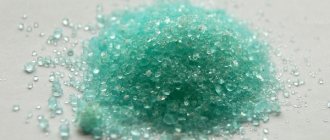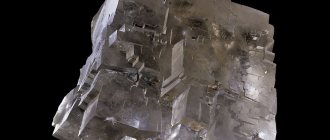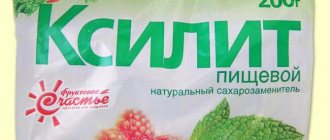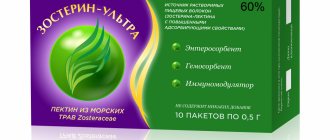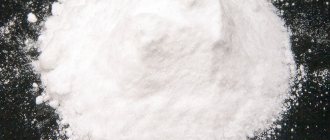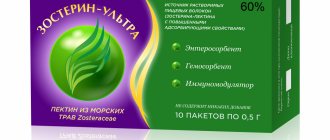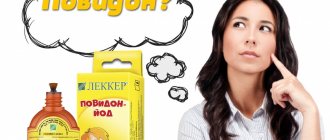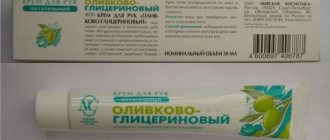| Lead |
| Atomic number | 82 |
| Appearance of a simple substance |
| Properties of the atom |
| Atomic mass (molar mass) | 207.2 a. e.m. (/mol) |
| Atomic radius | 175 |
| Ionization energy (first electron) | 715.2 (7.41) kJ/mol () |
| Electronic configuration | [Xe] 4f14 5d10 6s2 6p2 |
| Chemical properties |
| Covalent radius | 147 |
| Ion radius | (+4e) 84 (+2e) 120 |
| Electronegativity (Pauling) | 1,8 |
| Electrode potential | Pb←Pb2+ -0.126 V Pb←Pb4+ 0.80 V |
| Oxidation states | 4, 2 |
| Thermodynamic properties of a simple substance |
| Density | 11,3415 /³ |
| Molar heat capacity | 26.65[1]/(mol) |
| Thermal conductivity | 35,3 /(·) |
| Melting temperature | 600,65 |
| Heat of Melting | 4.77 kJ/mol |
| Boiling temperature | 2 013 |
| Heat of vaporization | 177.8 kJ/mol |
| Molar volume | 18.3 ³/mol |
| Crystal lattice of a simple substance |
| Lattice structure | cubic face-centered |
| Lattice parameters | 4,950 |
| c/a ratio | n/a |
| Debye temperature | 88,00 |
| Pb | 82 |
| 207,2 |
| [Xe]4f145d106s26p2 |
| Lead |
Lead
- an element of the main subgroup of the fourth group, the sixth period of the periodic system of chemical elements of D.I. Mendeleev, with atomic number 82. Denoted by the symbol Pb (Latin: Plumbum). The simple substance lead (CAS number: 7439-92-1) is a malleable, relatively fusible gray metal.
The origin of the word "lead" is unclear. In most Slavic languages (Bulgarian, Serbo-Croatian, Czech, Polish) lead is called tin. A word with the same meaning, but similar in pronunciation to “lead”, is found only in the languages of the Baltic group: švinas (Lithuanian), svins (Latvian). The Latin plumbum (also of unclear origin) gave the English word plumber - plumber (once pipes were caulked with soft lead), and the name of the Venetian prison with a lead roof - Piomba, from which, according to some sources, Casanova managed to escape. Known since ancient times. Products made from this metal (coins, medallions) were used in Ancient Egypt, lead water pipes - in Ancient Rome. Lead is referred to as a specific metal in the Old Testament. Lead smelting was the first metallurgical process known to man. Until 1990, large quantities of lead were used (together with antimony and tin) to cast typographical fonts, and also in the form of tetraethyl lead to increase the octane number of motor fuels.
Chemical properties of lead
Electronic formula: KLMN5s25p65d106s26p2, according to which it has oxidation states +2 and +4. Lead is not very reactive chemically. A metallic section of lead shows a metallic luster, which gradually disappears due to the formation of a thin film of PbO.
With oxygen it forms a number of compounds Pb2O, PbO, PbO2, Pb2O3, Pb3O4. Without oxygen, water at room temperature does not react with lead, but at high temperatures lead oxide and hydrogen are produced by the interaction of lead and hot water vapor.
The oxides PbO and PbO2 correspond to the amphoteric hydroxides Pb(OH)2 and Pb(OH)4.
The reaction of Mg2Pb and dilute HCl produces a small amount of PbH4. PbH4 is an odorless gaseous substance that very easily decomposes into lead and hydrogen. At high temperatures, halogens form compounds of the type PbX2 with lead (X is the corresponding halogen). All these compounds are slightly soluble in water. Halides of the PbX4 type can also be obtained. Lead does not react directly with nitrogen. Lead azide Pb(N3)2 is obtained indirectly: by reacting solutions of Pb(II) salts and NaN3 salt. Lead sulfides can be obtained by heating sulfur with lead, PbS sulfide is formed. Sulfide is also obtained by passing hydrogen sulfide into solutions of Pb(II) salts. In the voltage series, Pb is to the left of hydrogen, but lead does not displace hydrogen from dilute HCl and H2SO4, due to the overvoltage of H2 on Pb, and films of poorly soluble PbCl2 chloride and PbSO4 sulfate are formed on the metal surface, protecting the metal from further action of acids. When heated, concentrated acids such as H2SO4 and HCl act on Pb and form with it soluble complex compounds of the composition Pb(HSO4)2 and H2[PbCl4]. Nitric acid, as well as some organic acids (for example, citric acid) dissolve lead to produce Pb(II) salts. According to their solubility in water, lead salts are divided into insoluble (for example, sulfate, carbonate, chromate, phosphate, molybdate and sulfide), slightly soluble (for example, chloride and fluoride) and soluble (for example, lead acetate, nitrate and chlorate). Pb(IV) salts can be obtained by electrolysis of solutions of Pb(II) salts strongly acidified with sulfuric acid. Pb(IV) salts add negative ions to form complex anions, for example, plumbates (PbO3)2- and (PbO4)4-, chloroplumbates (PbCl6)2-, hydroxoplumbates [Pb(OH)6]2- and others. Concentrated solutions of caustic alkalis react with Pb when heated, releasing hydrogen and hydroxoplumbites of the X2[Pb(OH)4] type. Eion (Me=>Me++e)=7.42 eV.
Here are collected articles, abstracts, textbooks on various areas of chemistry. All works are checked by the administrator before publication. If you have interesting information that you are ready to share with Internet users, send it to us and we will definitely publish it. | List of medicines presented in Russia. Contains information on 15,767 medicines, including synonyms of names. |
|
| Auto-equalizer - selection of chemical reaction coefficients | www.webqc.org |
| Online equalizer of chemical reactions. Selects the coefficients of a given reaction. Works with classical molecular reactions, redox half-reactions, and reactions in ionic form. |
|
| Adsorption of polymers on solid surfaces | unknown |
| Adsorption interaction at the interface and properties of boundary layers, boundary layers of polymers on solid surfaces, the influence of adsorption interaction on the molecular mobility of polymer chains in boundary layers, changes in the properties of boundary layers as a consequence of a decrease in molecular mobility, the influence of a solid surface on the supramolecular structures of polymers, adsorption connection polymers with adhesion, the influence of the interface on synthesis reactions and the structure of three-dimensional polymers. |
|
| Aldehydes and ketones | L.A. Tsvetkov |
| To make the place of aldehydes in the series of hydrocarbon oxidation products clear to students, when drawing up chemical equations one should not avoid using the names and formulas of the acids into which aldehydes are converted. The formulas of acids can be given dogmatically in advance... |
|
| Anthropogenic soil pollution | E.E.Matveev |
| Classification of soil contaminants, ways in which contaminants enter the soil, the importance of protecting soil cover. |
|
| The history of the discovery of astatine, as well as its physical and chemical properties, is briefly outlined. |
|
| Atomic-molecular science in chemistry | G. P. Khomchenko |
| Atomic-molecular science was developed and first applied in chemistry by the great Russian scientist M.V. Lomonosov. The main provisions of his teaching are set out in the work “Elements of Mathematical Chemistry” (1741) and a number of others. The essence of Lomonosov’s teaching boils down to the following... |
|
| Acetylene. Acetylene production | L.A. Tsvetkov |
| Experiments in producing acetylene and studying its properties are demonstrated simultaneously. You should not prepare acetylene for the lesson in advance and store it in the gasometer due to the danger of explosion. The most accessible way to produce acetylene is the interaction of calcium carbide with water... |
|
| Benzene as a solvent | L.A. Tsvetkov |
| 1 ml of benzene is poured into one test tube, and the same amount of water into the other. A small piece of fat or a few drops of vegetable oil are placed in test tubes. The test tubes are shaken... |
|
Main lead compounds
Lead oxides
Lead oxides are predominantly basic or amphoteric in nature. Many of them are painted red, yellow, black, and brown. In the photograph at the beginning of the article, on the surface of the lead casting, tarnish colors are visible in its center - this is a thin film of lead oxides formed due to the oxidation of hot metal in air.
Lead halides
Lead chalcogenides
Lead chalcogenides—lead sulfide, lead selenide, and lead telluride—are black crystals that are narrow-gap semiconductors.
Lead salts
Lead sulfate Lead nitrate Lead acetate
- Lead sugar is a very toxic substance. Lead acetate, or lead sugar, Pb(CH3COO)2·3H2O exists in the form of colorless crystals or white powder, which slowly erodes with the loss of water of hydration. The compound is highly soluble in water. It has an astringent effect, but since it contains poisonous lead ions, it is used externally in veterinary medicine. Acetate is also used in analytical chemistry, dyeing, calico printing, as a silk filler, and for the production of other lead compounds. Basic lead acetate Pb(CH3COO)2·Pb(OH)2, a less water-soluble white powder, is used to decolorize organic solutions and purify sugar solutions before analysis.
Production[edit]
Lead acetate can be prepared by boiling elemental lead in acetic acid and hydrogen peroxide. This method also works with lead carbonate or oxide.
Pb (s) + H 2 O 2 (aq) + 2 H + (aq) → Pb 2+ (aq) + 2 H 2 O (l) Pb 2+ (aq) + 2 CH 3 COO — (aq) → Pb (CH 3 COO) 2 (aq)
Lead(II) acetate can also be prepared by a single substitution reaction between copper acetate and lead metal:
Cu (CH 3 COO) 2 + Pb → Cu + Pb (CH 3 COO) 2
Lead Applications
Lead in the national economy
Lead nitrate
used for the production of powerful mixed explosives.
Lead azide is used as the most widely used detonator (initiating explosive). Lead perchlorate is used to prepare a heavy liquid (density 2.6 g/cm³) used in flotation beneficiation of ores, and it is sometimes used in high-power mixed explosives as an oxidizing agent. Lead fluoride alone, as well as together with bismuth, copper, and silver fluoride, is used as a cathode material in chemical current sources. Lead bismuthate, lead sulfide PbS, lead iodide are used as cathode material in lithium batteries. Lead chloride PbCl2 as a cathode material in backup current sources. Lead telluride PbTe is widely used as a thermoelectric material (thermo-emf with 350 μV/K), the most widely used material in the production of thermoelectric generators and thermoelectric refrigerators. Lead dioxide PbO2 is widely used not only in lead batteries, but also on its basis many reserve chemical current sources are produced, for example, lead-chlorine cell, lead-fluoride cell, etc. Lead white
, basic carbonate Pb(OH)2•PbCO3 , a dense white powder, is obtained from lead in air under the influence of carbon dioxide and acetic acid. The use of white lead as a coloring pigment is no longer as common as it once was due to its decomposition by hydrogen sulfide H2S. Lead white is also used for the production of putty, in the technology of cement and lead carbonate paper. Lead arsenate and arsenite are used in insecticide technology to kill agricultural pests (gypsy moth and cotton boll weevil). Lead borate Pb(BO2)2·H2O, an insoluble white powder, is used to dry paintings and varnishes, and, along with other metals, as coatings on glass and porcelain. Lead chloride PbCl2, a white crystalline powder, is soluble in hot water, solutions of other chlorides and especially ammonium chloride NH4Cl. It is used to prepare ointments for treating tumors. Lead chromate PbCrO4 is known as chrome yellow dye, and is an important pigment for making paints, for dyeing porcelain and fabrics. In industry, chromate is used mainly in the production of yellow pigments. Lead nitrate Pb(NO3)2 is a white crystalline substance, highly soluble in water. This is a binder of limited use. In industry, it is used in matchmaking, textile dyeing and printing, antler dyeing and engraving. Lead sulfate Pb(SO4)2, a water-insoluble white powder, is used as a pigment in batteries, lithography, and printed fabric technology. Lead sulfide PbS, a black, water-insoluble powder, is used in firing pottery and to detect lead ions. Since lead absorbs γ radiation well, it is used for radiation protection in X-ray facilities and in nuclear reactors. In addition, lead is considered as a coolant in projects of advanced fast neutron nuclear reactors. Lead alloys are widely used. Pewter (tin-lead alloy), containing 85-90% Sn and 15-10% Pb, is moldable, inexpensive and used in the manufacture of household utensils. Solder containing 67% Pb and 33% Sn is used in electrical engineering. Alloys of lead and antimony are used in the production of bullets and typographic fonts, and alloys of lead, antimony and tin are used for figured casting and bearings. Lead-antimony alloys are commonly used for cable sheaths and electric battery plates. Lead compounds are used in the production of dyes, paints, insecticides, glass products and as an additive to gasoline in the form of tetraethyl lead (C2H5)4Pb (moderately volatile liquid, vapors in small concentrations have a sweetish fruity odor, in large concentrations they have an unpleasant odor; Tm = 130 °C, boiling point = 80 °C/13 mm Hg; density 1.650 g/cm³; nD2v = 1.5198; not soluble in water, miscible with organic solvents; highly toxic, easily penetrates skin; maximum permissible concentration = 0.005 mg/m³; LD50 = 12.7 mg/kg (rat, oral)) to increase octane number.
Lead in medicine
Economic indicators
Prices for lead in ingots (grade C1) in 2006 averaged 1.3-1.5 dollars/kg.
Countries, largest consumers of lead in 2004, in thousand tons (according to ILZSG):
| China | 1770 |
| EU | 1553 |
| USA | 1273 |
| Korea | 286 |
Links[edit]
- ^ abcde Pradyot, Patnaik (2003). Handbook of Inorganic Chemicals
. McGraw-Hill Companies, Inc. ISBN 0-07-049439-8. - ^ a b c d e https://chemister.ru/Database/properties-en.php?dbid=1&id=1990
- ^ a b c https://chemister.ru/Database/properties-en.php?dbid=1&id=1762
- ^ abcd Sigma-Aldrich Co. , lead(II) acetate trihydrate. Retrieved June 8, 2014.
- "Lead compounds (as Pb)". Immediately dangerous to life or health (IDLH) concentration
. National Institute of Occupational Safety and Health (NIOSH). - https://www.fda.gov/Cosmetics/ProductsIngredients/Products/ucm143075.htm
- "Alarmingly Long History of Lead Toxicity in Winemaking." Anna Archibald
, July 30, 2022. Accessed: December 22, 2022. - [1] Wu Mingren
, December 4, 2022.
Accessed
: December 22, 2022. - Lead Poisoning and Rome
- Stoeppler, M. (1992), Hazardous Metals in the Environment, Methods and Instrumentation in Analytical Chemistry, 12
, Elsevier, p. 60, ISBN 9780080875606, It is clear from the results achieved that the law regarding the purity of lead in wines has often been ignored in the last two centuries. - Specht, W., & Fischer, C. (1959). Vergiftungsnachweis an den Resten einer 900 Jahre alten Leiche. Arch. Criminol., 124: 61-84. [Translation: Evidence of intoxication in the remains of a 900-year-old corpse]
- One or more of the preceding sentences incorporates text from a publication now in the public domain: Chisholm, Hugh, ed. (1911). "Dies, Christophe Albert". Encyclopedia Britannica
.
8
(11th ed.). Cambridge University Press. item 211. - Dies, Albert Christophe (1810). Biographische Nachrichten von Joseph Haydn nach mündlichen Erzählungen desselben entworfen und herausgegeben
[
Biographical accounts of Joseph Haydn, written and edited from his own oral histories
].
Vienna: Camesinaische Buchhandlung. English translation: Dies, Albert Christoph (1963). "Biographical Accounts of Joseph Haydn". In Gotwals, Vernon (ed.). Haydn: Two Modern Portraits
. (translation by Vernon Gotwals). Milwaukee: Univ. from Wisconsin Press. ISBN 0-299-02791-0. - "Pharmazeutische Zeitung zu Beethovens wahrscheinlicher Bleivergiftung". Archived from the original on 2009-02-21. Retrieved September 12, 2009.
- "Beethoven litt unter Bleivergiftung". Archived from the original on 2009-02-21. Retrieved February 24, 2022.
- Mary Seacole: Mrs. Seacole's Wonderful Journey in Many Countries
, Chapter IV, (1990 Oxford University Press reprint) ISBN 0-19-506672-3; (2005 Penguin 20th Century Classics reprint, editor Sarah Salih) ISBN 0-14-043902-1 - ↑
Jane Robinson:
Mary Seacole: the charismatic black nurse who became the heroine of Crimea
, p. 53. Constable 2004 (p/w. ISBN 1-84119-677-0) - ↑
Weekly Irish Times, Saturday 15 October 1887; Enniskillen Chronicle and Erne Packet, 24 October 1887, p. 3 - Gunn, Fenja. (1973). Artificial face: history of cosmetics. - quoted in 18th Century Lady's Leisure.
- Lead-Based Hair Products: Too Hazardous for Home Use—Results
, Howard W. Mielke, Ph.D., Myesha D. Taylor, Chris R. Gonzalez, M. Kelly Smith, Pamela W. Daniels, and Ayanna W. Buckner. Journal of the American Pharmaceutical Association (NS37, Jan/Feb 1997: 85-89). - ^ ab Can West News Service: Greek formula in gray area after ban. Archived August 8, 2007, at the Wayback Machine.
- "Archive copy" (PDF). Archived from the original (PDF) on October 31, 2014. Retrieved November 1, 2014. CS1 maint: archived copy as title (link)
- Project Gutenberg eBook by American Frugal Housewife Lydia M. Child
- Laboratory manual for biology. Sharp. 1911, American Book Company. item 351
- Andes, Louis Edgar, and Arthur Morris. Oil Paints and Printer Inks a practical guide to linseed oil, boiled oil, paints, artists' colors, black and black and color printer inks
. London: Scott, Greenwood;, 1903. 41. Print.
